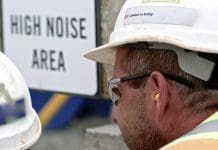Myles Levy, construction partner at Joelson Law firm, discusses the limits of the ‘duty to warn’ legislation within construction
What is a duty to warn?
In leading the case Goldswain v Beltec Limited [2015] in the Technology and Construction Court, Judge Akenhead summarised 5 principles regarding the duty to warn:
- The first is that the professional consultant is, almost invariably, obliged to exercise reasonable skill and care. As such, the notion of the duty to warn is no more than an aspect of the duty of a professional to act with the skill and care of a reasonably competent person in that profession.
- Where a professional consultant is contractually retained, the court first determines the scope of its contractual duties and services. The decision as to whether said consultant has a duty to warn is then seen in the context of what that professional person is contractually engaged to do.
- However, whether, when and to what extent the duty to warn arises depends on the precise circumstances of each case.
- It often arises where there is an obvious and significant danger either to life and limb or to property. It also arises when a diligent professional “ought to have known of such danger”.
- In the case that it is alleged that the professional consultant ought to have known of danger, the mere possibility that the contractor may not carry out its works properly is unlikely to create a duty to warn.
Any claim alleging a duty to warn will necessarily be fact-specific, decided on a case-by-case basis.
Who has a duty to warn?
There are many moving parts within any construction project and therefore any party involved in a project is at risk of a breach of a duty to warn. A supplier, for example, may have a duty to warn if it knows, or ought reasonably to know, that a certain material would or may create problems when used in conjunction with its product. Similarly, contractors are at risk, but cases have often been decided by confining the contractor’s duty with respect only to their workmanship obligation.
Generally, such allegations are most commonly made by a client against a professional consultant.
This is due to a professional consultant often having an over-arching ongoing role on a project. It may be involved from conception through to completion and during the defect’s labiality period, or a professional consultant may have a duty to warn in relation to how a building contract or subcontractor carries out the works. As a skilled professional with an advisory role, its duty to exercise skill and care covers many aspects of a project and thus expands its culpability.
What is the extent of a duty to warn?
The duty to warn generally arises in respect of defects in design and methods of working. Case law principles indicate that the duty extends only to danger of death, personal injury or damage to property. The type of risk about which the party engaged in the project has to warn also depends on its contractual obligations, and the works or services that it is providing on a project.
In Hart Investments Limited v Fidler [2007] in Technology and Construction Court, the court held that a structural engineer had a duty to warn the contractor and the client developer in the absence of appropriate propping to the temporary works. The engineer was employed in respect of the permanent construction works, which included an implied duty to inspect the important elements of the permanent structural works and also included a duty to warn “if it observed a state of temporary works that was dangerous and causing immediate peril to the permanent works”.
The duty to warn aspect of the duty of a professional to act with the skill and care of a reasonably competent person in that profession overlaps with other duties; such as a duty to check the design of other firms engaged in the project or the duty to inspect or supervise the works.
The case law has suggested that the duty to warn may also be extended further in certain circumstances. For instance, a court held that a project manager should have advised its client of the limited protection afforded by letters of intent; they should have made every effort to execute a formal building contract.
Similarly, a court held that a project manager had a duty to warn the employer if other members of the professional team were not performing their respective duties (although the court reached this conclusion in that case on the basis of particular terms of the project manager’s appointment).
A court has held that where there are risks inherent with using a new or bespoke or untested design, a professional designer has a duty to warn its client of this and obtain express approval to continue.
What is sufficient warning?
The definition of ‘sufficient warning’ depends upon certain factors, including the party’s contract, the nature of the danger, if applicable, and, circumstances in which the danger is identified.
Any warning must be made expressly clear, especially if a party is warning about a risk that it is contractually obliged to avoid.
The party may only have to warn those that it has a contractual relationship with, or perhaps a local authority. The reasoning for alerting a local authority stems from that a local authority has wide powers to safeguard and protect the public. For example, a local authority can take emergency measures to deal with a dangerous building under Section 78 of the Building Act 1984 and could apply for an injunction under Section 36.
A victim of a breach of a duty to warn who is claiming damages must still satisfy the basic legal requirement of causation; in other words its claim may fail if evidence shows that it would not have headed the warning in any event if it had been provided with one.
The context of permanent and temporary works
As a general rule of thumb, a professional designer may be responsible for permanent construction works; whereas the contractor is responsible for his working methodology and temporary works. However, the situation on many projects isn’t so clear cut. Often, it’s found that the professional consultant’s contractual scope of services may include approving the contractor’s or sub contractor’s design for temporary works, and temporary works may be likely to be complex, or, potentially impact on the client’s use of parts of the site. Likewise, the professional consultant in its site visits or in regard to a bespoke methodology may assume responsibility for the directing of certain construction works methodology. And finally, the professional consultant’s appointment may include inspecting and supervising the works.
If you have any queries with regard to the application of a duty to warn in construction projects, or otherwise of a construction legal nature please contact our construction partner Myles Levy.
We are prepared: we build our houses squat,
Sink walls in rock and roof with good slate.
Storm on the Island by Seamus Heaney
Myles Levy
Construction partner
Twitter: @joelsonuk
LinkedIn: Joelson Law

















